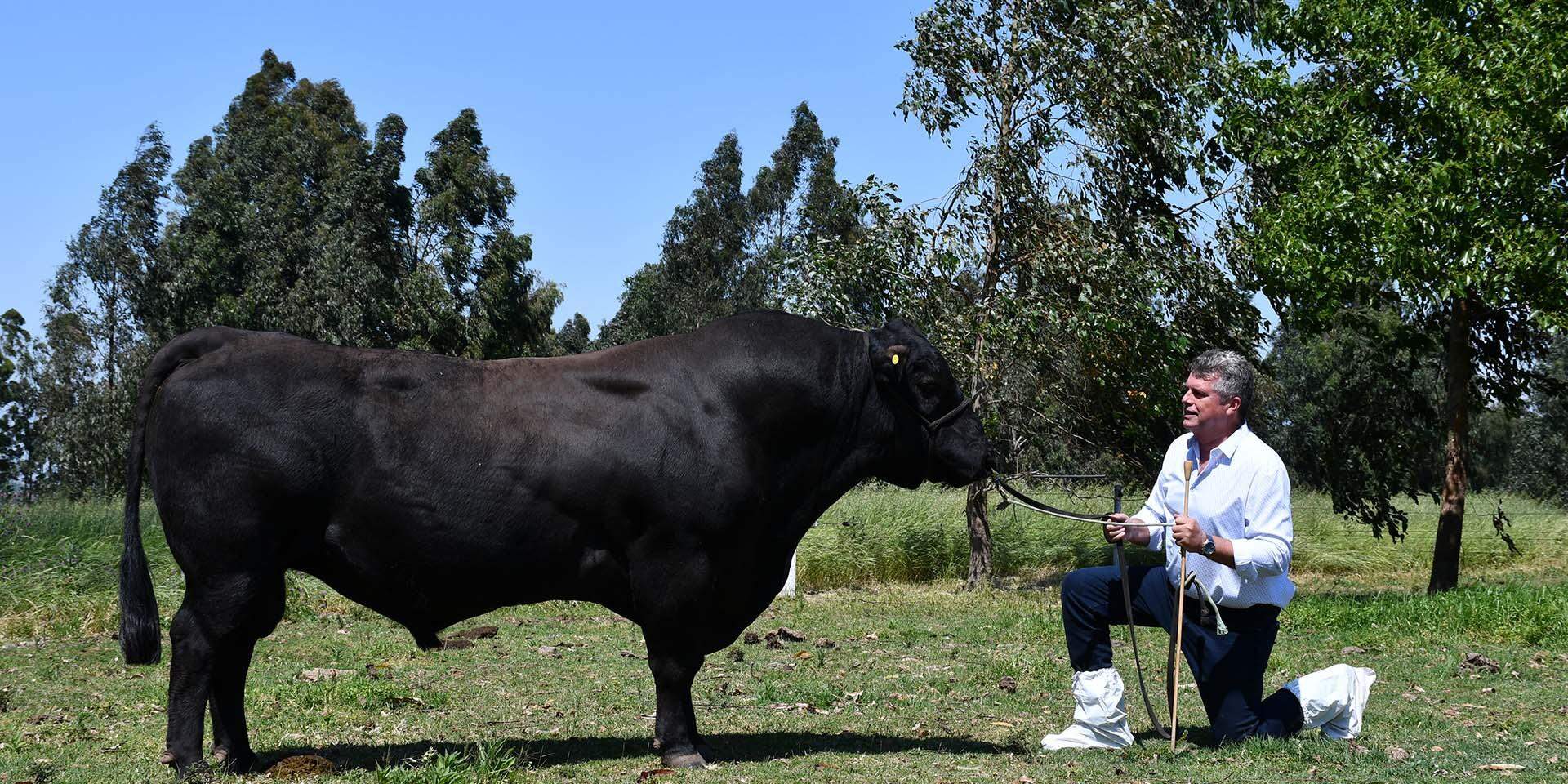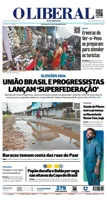Cattle Raising in the Amazon: the challenge of matching productivity and sustainability
Responsible for 41.6% of the livestock in Brazil - 89 million heads - the region eye witnessed the transformation of an area equivalent to Austria, the United Kingdom and Portugal, together, into pastures between 1985 and 2018. The challenge now is to carry on the activity in face of the global demand for sustainability
Known for the great extension of its forest and its rivers, the Amazon region is also superlative when it comes to cattle raising: 41.6% of the cattle herd in Brazil is raised in the states that make up the Legal Amazon (Acre, Amapá, Amazonas, Mato Grosso, Pará, Rondônia, Roraima, Tocantins and Maranhão). This means that of the more than 214 million cattle in the country, 89 million, are in the region. That’s what estimates data from 2020 provided by the Instituto Brasileiro de Geografia e Estatística (IBGE) [Brazilian Institute of Geography and Statistics]. In the Amazon biome – vegetation that comprises a good part of the states of the Legal Amazon – cattle raising is the main activity of Brazilian agribusiness.
One characteristic of the cattle-raising activity in the region, however, has been consolidated as a result of successive incentives from the federal government, since the 1950s, associated to the rampant deforestation. According to the Mapbiomas platform [yearly mapping of land use cover in Brazil], between 1985 and 2018, nearly 42 million hectares of the Amazon – equivalent to the territories of Austria, the United Kingdom and Portugal together – were transformed into pastures. This means that 88% of the increase in livestock area in the region resulted from the clearing of forests. On the other hand, in recent years, the belief that it is possible to combine agriculture with sustainability has gained strength.
Agricultural organizations and producers in Pará are currently defending the adoption of more advanced practices to match productivity and sustainable development, with the purpose of achieving low-carbon agriculture in Brazil. According to the Sistema de Estimativa de Emissões de Gases de Efeito Estufa [Greenhouse Gas Emission Estimation System] from the Observatório do Clima [Climate Observatory], a network comprised by 37 entities that discuss climate change in the country, almost half of Brazil's carbon dioxide emissions are caused by deforestation. And 95% of the deforested areas are mainly used for agriculture and livestock.
The zootechnician and rural auctioneer Guilherme Minssen, technical director of Federação da Agricultura e Pecuária do Pará (Faepa) [Federation of Agriculture and Livestock of Pará], remarks that environmental balance is the main basis for agricultural production to have a “more favorable” return in business. He adds there can be no production if the environment is not in total equilibrium...“of temperature, of natural qualities, so that we have a good equation, when we analyze the soil, plants and animals”.
 Zootecnista and rural auctioneer Guilherme Minssen is Faepa's technical director (Márcio Nagano / O Liberal)
Zootecnista and rural auctioneer Guilherme Minssen is Faepa's technical director (Márcio Nagano / O Liberal)Minssen, who is also an advisor to the Associação Brasileira de Zootecnistas (ABZ) [Brazilian Association of Zootechnicians], says that many rural properties integrated into the agricultural sector in Pará, for example, have an attested environmental balance. And consequently, he says, "they sequester more carbon from the atmosphere" than the standing forest itself. “According to Embrapa [Brazilian Agricultural Research Corporation], sustainable production captures more carbon than the forest because it has soil with enough humus; more precocious animals and, therefore, it rotates the carbon chain faster”.
Complying with the law and targeting zero deforestation
According to the representative of Faepa, the federation has been debating the campaign for zero illegal deforestation for a long time. “We don't need to cut down a single tree considering the areas that have already been anthropized [according to Law 12651/2012, anthropized areas are those that were degraded by man after July 22, 2008]. We need to implement such areas. We have the technology expertise and know how to employ it, with more balanced soils, which concentrate calcium and phosphorus in its basic constitution. Here [in the region] we have constant temperatures, we have plenty of underground water, and much rain. The Amazon is a favorable environment for production", he assesses.
 Carioca Farm (Márcio Nagano / O Liberal)
Carioca Farm (Márcio Nagano / O Liberal)According to the Faepa representative, the social problems found in some rural areas in the Amazon, such as “grilagem” [land squatting], deforestation and slave labor, are crimes that must be punished, as provided for by Brazilian law. “This has nothing to do with animal production. This mixture occurs where the State does not exist, when the State is absent from its roles. Animal and agricultural production, today, do not need to be operated ‘nor even an inch’ outside the law”, ponders Guilherme Minssen.
The trend now is to produce without tearing down
Altair Burlamaqui, rural vice-president of the Associação Comercial do Pará (ACP), [Commercial Association of Pará], agricultural producer owner of Fazenda Carioca, located in the municipality of Castanhal lists some examples of good practices in the city of Paragominas, in southeastern Pará. Mário Lúcio Castro Costa, cattleman from Fazenda Marupiara in Thailand also presents models of inventiveness for businesses that seek a balance between livestock production and sustainability in the Amazon. The two references, says Burlamaqui, are successful “cases” that serve as inspiration.
 Agricultural Producer Altair Burlamaqui is ACP's Rural Vice President (Márcio Nagano / O Liberal)
Agricultural Producer Altair Burlamaqui is ACP's Rural Vice President (Márcio Nagano / O Liberal)“For me, Paragominas is one of the great examples. After the Arco de Fogo operation [in 2008, when the municipality was among the most deforested in Brazil], the location has adapted itself, seeking for deforestation avoidance, and increased production in areas that were already anthropized, looking forward to increasing productivity without devastating vegetation areas anymore. In other words, no one dropped trees any longer and started to produce in already anthropized areas, logically, respecting the vocation of each area”, says the ACP representative.
According to Burlamaqui, the experience of cattle breeder Mário Lúcio de Castro Costa should be highlighted as his colleague has managed, within a sustainable model, to “produce and carry out livestock within the correct environmental molds”. "These are two great and good examples, which can be summarized regarding the fact that, if the areas are used based on respect for their vocation for agriculture, reforestation or livestock activities, one starts to produce, seeking the intensification, however, without the need to ‘open’ any new area, thus, respecting the Forest Code”.
During the last 40 years, there was a sharp implementation of technologies to increase productivity (...) This is not the cattle breeding of the future" - Altair Burlamaqui, agricultural producer.
The cattle breeder suggests some technologies and techniques to be put into practice, in order to make more and better use of areas that have been previously deforested, such as: rotational grazing and crops, fertilizing, fulfilling grass cycling, observing the rainfall index [related to rainfall seasons in each region], and managing pasture grass as cropping. “If you consider pasture grass as a crop, you can increase potential levels in an area without the necessity of clearing a new one”, he explains.
Altair Burlamaqui, who is about to turn 45 years old, son and grandson of cattle breeders in the Marajó archipelago, one of the regions in Pará where there are the biggest social problems in Brazil, has witnessed during his entire life, the changes and new challenges faced by the livestock industry in the country. Fifteen years ago, he started the activities of the Fazenda Carioca, a farm in society with Breno Borges.
Cattle raising has been going through intense changes year by year. Particularly, due to the use of new technologies, maximizing beef production and applying biotechnologies, such as embryo transfer procedures to produce higher quality animals. Thus, during the last 40 years, there was a sharp implementation of technologies to increase productivity in each area in order to supply the consumer market, contrasting the impossibility of clearing new farming areas, according to the Government Forestry Laws. This is not the cattle breeding of the future, it is, in fact, the current one. If you do not manage to adjust your production you will be in clear opposition to the current context, consequently, there will neither productivity nor profiting, resulting in market exclusion”, he predicts.
 (Tarso Sarraf / O Liberal)
(Tarso Sarraf / O Liberal)Banco da Amazônia [Bank of Amazon] launched the Pecuária Verde project [Green Cattle Raising] last Monday, November 29th, consisting in another action targeting the productive sector, matching environmental sustainability. The aim is to provide a budget to Pará state of more than 1 billion reais, from the Fundo Constitucional de Financiamento do Norte (FNO) [Constitutional Financing Fund of North Region], to increase livestock farming in the region.
During the lauching of Pecuária Verde project, the director of Management of Funds and Portfolio of Banco da Amazônia, Luiz Otávio Maciel, announced that the budget was obtained because the Bank was selected in the project Finanças Brasileiras Sustentáveis (Fibras) [Sustainable Brazilian Finances] – a cooperation agreement between German and Brazilian government, which was aimed to sponsor expert consulting. The bank was also supported by the French Development Department. “The project is innovative, since it incorporates, to its technology, a technical measurement that categorizes the stage of technical development of the livestock production activity. Therefore, considering the results of that assessment, it is possible to technically recommend the best management of that activity, in order to obtain productivity”, states the director.
Productive chain: adjustment with the MPF
At the end of October, the Ministério Público Federal (MPF) [Federal Public Ministry], Organização Amigos da Terra – Amazônia Brasileira [Friends of the Earth Organization – Brazilian Amazon], and the Associação Instituto de Manejo e Certificação Florestal e Agrícola (Imaflora) [Institute of Forestry and Agricultural Management and Certification Association] signed a cooperation agreement to create a technical committee to support the realization and expansion of the Termos de Ajustamento de Conduta (TACs) [Conduct Adjustment Terms], which is an agreement document amongst the federal department, cold storage companies and other members in the cattle breeding productive chain. The document is known as the Meat TAC.
If you consider pasture grass as a crop, you can increase potential levels in an area without the necessity of clearing a new one” - Altair Burlamaqui, agricultural producer.
Since 2009, the Federal Public Ministry monitors the meat productive chain in Pará. It has found irregularities related to situations such as, the lack of the Cadastro Ambiental Rural (CAR) [Rural Environmental Registry] and expired rural environmental licenses. “The agreement term fills in a gap of organization and technical support to the demands of TAC regarding the livestock production in Pará, benefiting the partner signatories and the other direct or indirect participants, which can count with more channels of participation and more promptness to solve the necessary demands”, highlights the federal attorney Ricardo Negrini.
From the cooperation agreement, the MPF is able to provide the necessary guidelines to carry out actions of scientific support, consulting and instruction to the Meat TAC – besides taking part, whenever possible, in meetings for guidelines involving the members to discuss and to collaborate to the implementation of defined targets in the document.
 (Tarso Sarraf / O Liberal)
(Tarso Sarraf / O Liberal)Besides other tasks, Amigos da Terra Institution and the Imaflora Association are in charge for creating a committee to strategical tutoring to the MPF unity in Pará, with the participation of social actors of the livestock productive chain, such as, cattle breeders, related entities, members interested in the implementation of the Meat TAC and its expansion.
One of the first actions planned for the TAC to be successful is the program named Boi na Linha, designed by MPF in partnership with Imaflora. The program comprises a series of workshops …“for training companies to improve their production, in defense of a livestock economic chain in the Amazon which respects the socioenvironmental laws”, explains the MPF.
In October, training sessions were held in Rio Branco (Acre), Manaus (Amazonas), Marabá and Santarém (Pará). Belém, capital of Pará, hosted workshops on the November 9th and 10th. In São Paulo, the workshops were on the November 18th. In Cuiabá (Mato Grosso), they took place on November 23rd and 24th. In Porto Velho (Rondônia), the workshops were held on November 30th and December 1st. In Rio Branco, the event was held again on December 1st.
Those workshop sessions and other ones are supported by the Instituto Clima e Sociedade (ICS) [Climate and Society Institute] and the activities are supposed to be expanded. Companies interested in sending representatives for the training sessions can register by completing forms available in the tab “agenda”, in the news section, in the program website www.boinalinha.org.
How to stimulate more productive cattle raising production:
- Decreasing deforestation;
- Preventing land speculation through the Rural Land Tax;
- Providing training and continuous technical support;
- Enhancing rural credit focusing on productivity gains;
- Installing infrastructure and services in priority areas.
Source: Amazon 2030 Project, initiative of Brazilian researchers to develop an action plan for the Brazilian Amazon.
Palavras-chave
COMPARTILHE ESSA NOTÍCIA



























